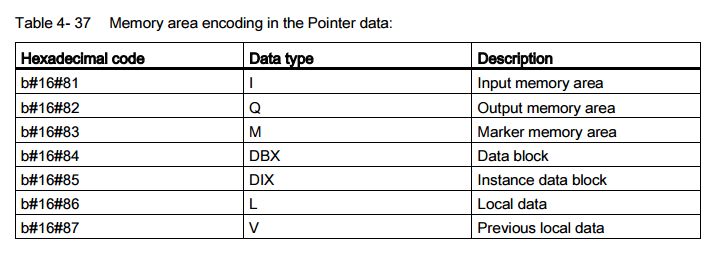

PLC(Programmable Logic Controller)即可编程逻辑控制器,可以理解为一个微型计算机,广泛应用于工业控制领域中,包括楼宇智控、精密机床、汽车电子等等。
随着物联网的兴起,越来越多的传统工业设备需要和外界通信,但很多情况下,类似PLC的微控制器经常会由于自身硬件因素而无法与外界直接互联互通。PC作为一个中介桥梁,为PLC与外界的沟通打开了一扇门。
而Python作为当前最火的语言,不仅在AI、云计算等诸多方面都能看到它的身影,在工业控制中也不能少了它。本文就来分享下如何使用Python构建PC与PLC的通信,也算展示一把Python在工控领域的风采。

Snap7简介
当前市场上主流的PLC通信方式为网络通信和串行通信。网络通信这块主要协议有profinet,modbus-tcp等,串行通信主要是基于RS232/485的modbus。
本次接触到的是西门子S7系列的PLC,通信方式都为网络型的,而Snap7(
http://snap7.sourceforge.net/)正是一个开源的、32/64位的、多平台的以太网通讯库:
- 支持多硬件体系结构(i386/x86_64、ARM/ARM64、Sun Sparc、Mips);
- 支持多系统(Windows、Linux、BSD、Solaris);
- 支持多语言(C/C++、Phyton、Node.js、Pascal、C#、VB)。
Python对其进行了封装,具体可以参见:
https://github.com/gijzelaerr/python-snap7。

开发环境搭建
这里主要从Windows和Linux(Ubuntu)两个平台,说说如何搭建Python环境下的Snap7开发环境。Python的安装这里就不再赘述,环境搭建主要就是Snap7和python-snap7两个库的安装。
1、安装Snap7
Windows下,需要根据Python的结构版本(32位/64位),将下载的Snap7的发布库copy到对应的Python安装根目录下即可。

如上图所示,我的Python是32bit,所以需要将Snap7中Win32目录下的文件Copy到Python的安装根目录下,如下图所示:


Linux(Ubuntu)下安装相对简单些,按如下命令即可:
$ sudo -s
$ add-apt-repository ppa:gijzelaar/snap7
$ apt-get update
$ apt-get install libsnap71 libsnap7-dev
2、安装python-snap7
Snap7的Python库安装就简单很多了,不管是Windows还是Linux,直接pip安装即可。
$ pip install python-snap7
经过上面两步,环境就算搭建好了。通过一个连接测试代码试试,判断下环境是否搭建正常。
import snap7
client = snap7.client.Client()
client.connect('192.168.0.1', 0, 1)
client.disconnect()
如果是下图提示,则环境正常(192.168.0.1的PLC不存在)。

如果是下图提示,则环境异常(snap7库安装不正确)。


读写PLC
环境搭建正常后,在正式建立通信前PLC还需做些配置工作,主要是开发自身的读写权限。具体参照下图配置:



通过上述配置,PLC可以正常通信了。
1、python-snap7读写分析
结合python-snap7的文档API和源码分析,python-sna7重要的两个方法是read_area和write_area,通过这两个方法就能读和写PLC的对应存储地址。
def read_area(self, area, dbnumber, start, size):
"""This is the main function to read data from a PLC.
With it you can read DB, Inputs, Outputs, Merkers, Timers and Counters.
:param dbnumber: The DB number, only used when area= S7AreaDB
:param start: offset to start writing
:param size: number of units to read
"""
assert area in snap7.snap7types.areas.values()
wordlen = snap7.snap7types.S7WLByte
type_ = snap7.snap7types.wordlen_to_ctypes[wordlen]
logger.debug("reading area: %s dbnumber: %s start: %s: amount %s: "
"wordlen: %s" % (area, dbnumber, start, size, wordlen))
data = (type_ * size)()
result = self.library.Cli_ReadArea(self.pointer, area, dbnumber, start,
size, wordlen, byref(data))
check_error(result, context="client")
return bytearray(data)
@error_wrap
def write_area(self, area, dbnumber, start, data):
"""This is the main function to write data into a PLC. It's the
complementary function of Cli_ReadArea(), the parameters and their
meanings are the same. The only difference is that the data is
transferred from the buffer pointed by pUsrData into PLC.
:param dbnumber: The DB number, only used when area= S7AreaDB
:param start: offset to start writing
:param data: a bytearray containing the payload
"""
wordlen = snap7.snap7types.S7WLByte
type_ = snap7.snap7types.wordlen_to_ctypes[wordlen]
size = len(data)
logger.debug("writing area: %s dbnumber: %s start: %s: size %s: "
"type: %s" % (area, dbnumber, start, size, type_))
cdata = (type_ * len(data)).from_buffer_copy(data)
return self.library.Cli_WriteArea(self.pointer, area, dbnumber, start,
size, wordlen, byref(cdata))
从参数可见,需要提供PLC的区域地址、起始地址、读和写的数据长度。PLC能提供如下信息:

2、PLC数据存储和地址
通过阅读PLC的手册获取到如下信息:

PLC的数据存储通过Tag的形式与存储区间关联,分为输入(I)、输出(O)、位存储(M)和数据块(DB)。程序在访问对应(I/O)tag时,是通过访问CPU的Process Image Out对相应地址进行操作的。具体对应关系如下:

到这里就能明白python-snap7中定义的areas地址是什么含义了。
areas = ADict({
'PE': 0x81, #input
'PA': 0x82, #output
'MK': 0x83, #bit memory
'DB': 0x84, #DB
'CT': 0x1C, #counters
'TM': 0x1D, #Timers
})
现在离读写PLC还差最后一步,就是起始地址如何确定呢?

从上可见对于M3.4,对应的就是M(0x83),起始地址是3,对应bit位是4。

实战
经过上面的精心准备,下面就来一波实战。通过读写PLC的M10.1、MW201来具体看看如何读写PLC。
import struct
import time
import snap7
def plc_connect(ip, rack=0, slot=1):
"""
连接初始化
:param ip:
:param rack: 通常为0
:param slot: 根据plc安装,一般为0或1
:return:
"""
client = snap7.client.Client()
client.connect(ip, rack, slot)
return client
def plc_con_close(client):
"""
连接关闭
:param client:
:return:
"""
client.disconnect()
def test_mk10_1(client):
"""
测试M10.1
:return:
"""
area = snap7.snap7types.areas.MK
dbnumber = 0
amount = 1
start = 10
print(u'初始值')
mk_data = client.read_area(area, dbnumber, start, amount)
print(struct.unpack('!c', mk_data))
print(u'置1')
client.write_area(area, dbnumber, start, b'')
print(u'当前值')
mk_cur = client.read_area(area, dbnumber, start, amount)
print(struct.unpack('!c', mk_cur))
def test_mk_w201(client):
"""
测试MW201,数据类型为word
:param client:
:return:
"""
area = snap7.snap7types.areas.MK
dbnumber = 0
amount = 2
start = 201
print(u'初始值')
mk_data = client.read_area(area, dbnumber, start, amount)
print(struct.unpack('!h', mk_data))
print(u'置12')
client.write_area(area, dbnumber, start, b'')
print(u'当前值')
mk_cur = client.read_area(area, dbnumber, start, amount)
print(struct.unpack('!h', mk_cur))
time.sleep(3)
print(u'置3')
client.write_area(area, dbnumber, start, b'')
print(u'当前值')
mk_cur = client.read_area(area, dbnumber, start, amount)
print(struct.unpack('!h', mk_cur))
if __name__ == "__main__":
client_fd = plc_connect('192.168.0.1')
test_mk10_1(client_fd)
test_mk10_1(client_fd)
plc_con_close(client_fd)
从代码可见,MW201,根据M确定area为MK,根据W确定数据amount为2Btye,根据201确定start为201,读出来的数据根据数据长度用struct进行unpack,写数据对应strcut的pack。
这里给出PLC变量类型和大小,这样对应确定读写的amount。

最后给出一段视频,Python操作PLC来个跑马灯。
声明:本文为作者投稿,原载于个人公众号chafezhou,版权归作者所有。
“征稿啦!”
CSDN 公众号秉持着「与千万技术人共成长」理念,不仅以「极客头条」、「畅言」栏目在第一时间以技术人的独特视角描述技术人关心的行业焦点事件,更有「技术头条」专栏,深度解读行业内的热门技术与场景应用,让所有的开发者紧跟技术潮流,保持警醒的技术嗅觉,对行业趋势、技术有更为全面的认知。
如果你有优质的文章,或是行业热点事件、技术趋势的真知灼见,或是深度的应用实践、场景方案等的新见解,欢迎联系 CSDN 投稿,联系方式:微信(guorui_1118,请备注投稿+姓名+公司职位),邮箱(guorui@csdn.net)。
 鲁公网安备37020202000738号
鲁公网安备37020202000738号